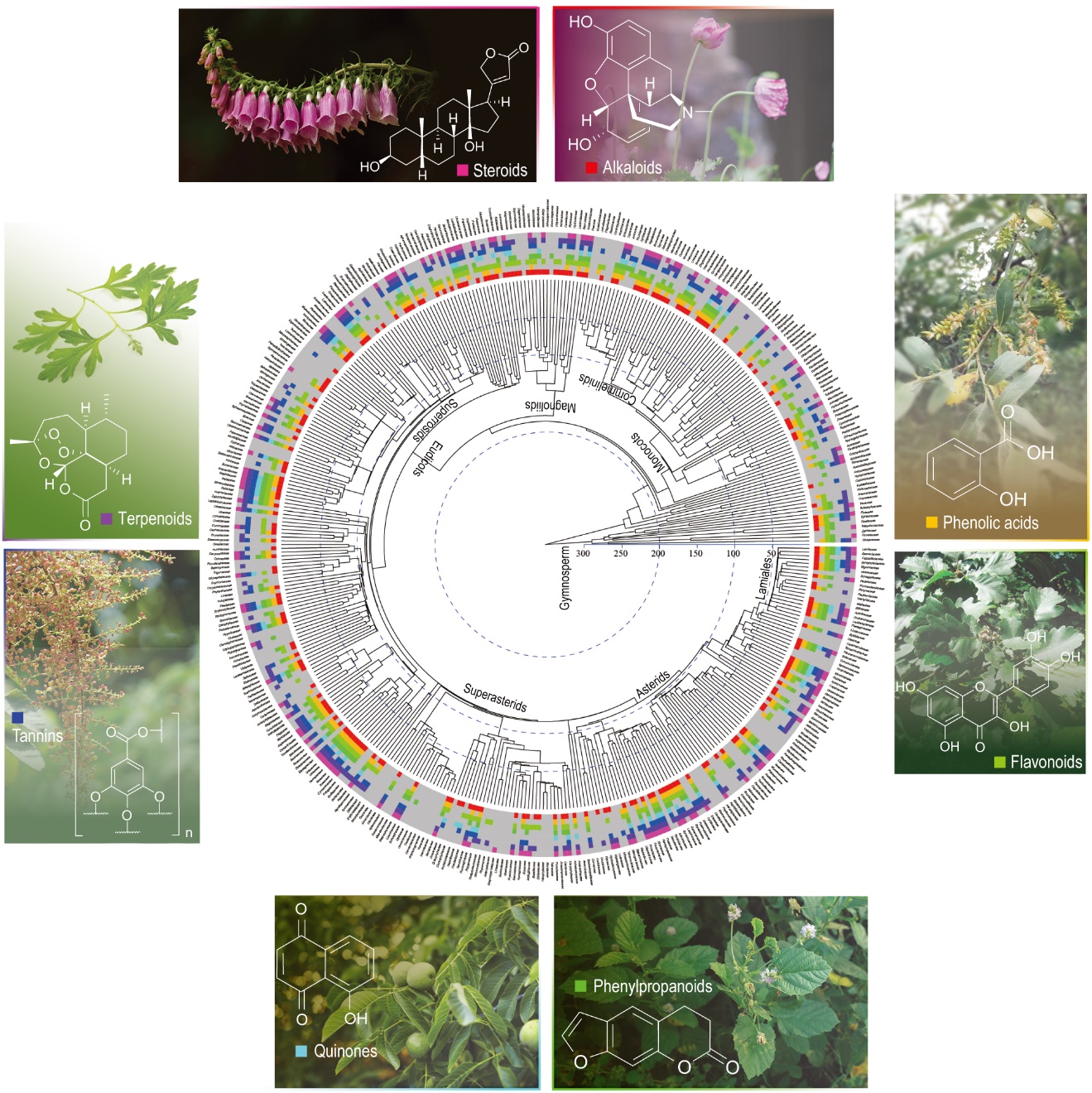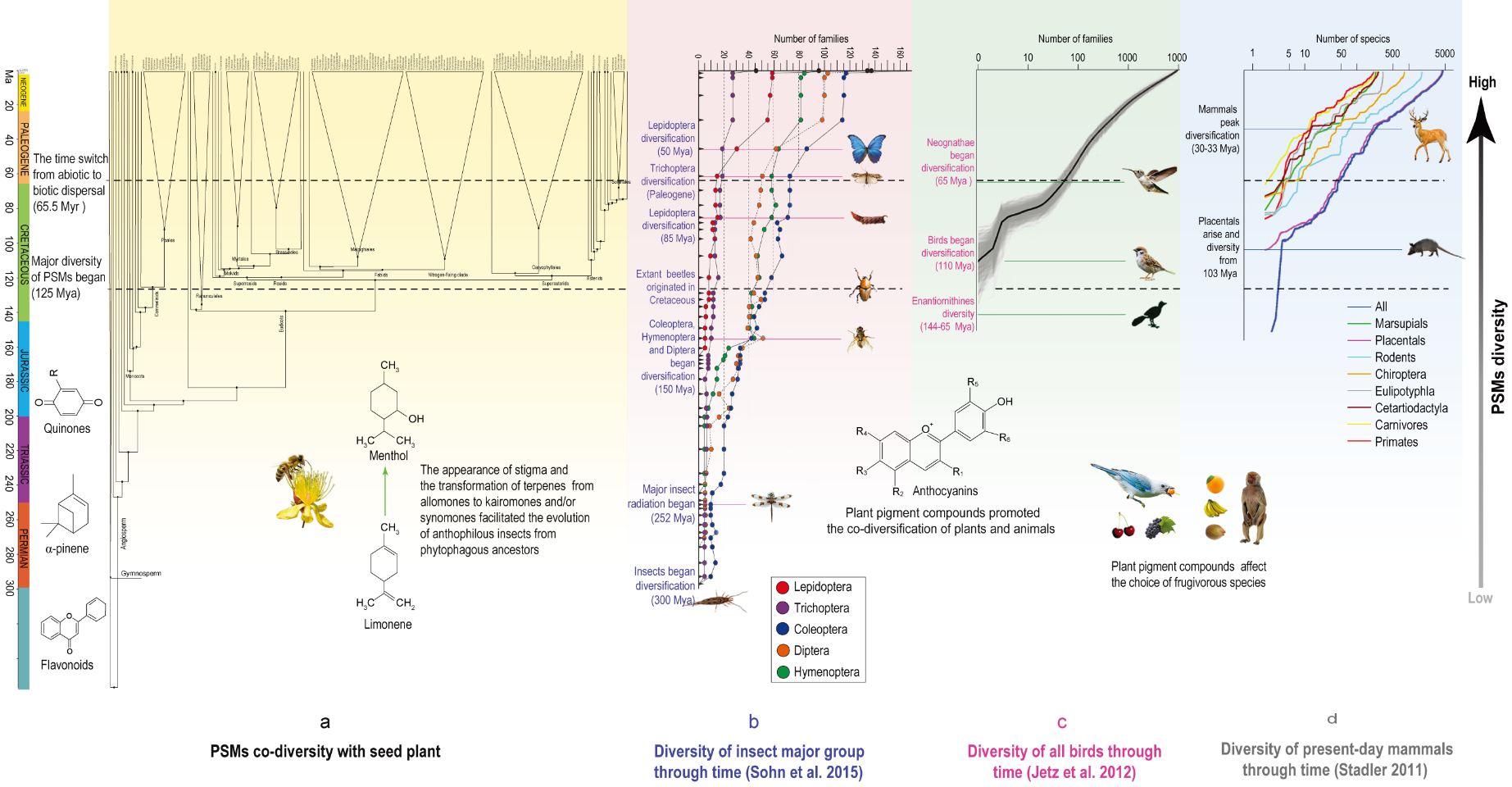Plant secondary metabolites (PSMs) are very important to human in economical and medicinal purpose. They are a key bridge that connected phytochemistry to other subjects of plant science and the important chemical trait for in-depth study of plant phylogeny.
Using the distribution pattern and evolution regulation of PSMs to explore the origin, evolution and adaptation mechanisms of plant diversity, or to study the evolution and distribution pattern of PSMs through phylogenetic method are new frontier research area. It is called evolutionary biology or chemicobiology that interdisciplinary study between phylogenetic botany and phytochemistry.
The research team from Kunming Institute of Botany, Chinese Academy of Sciences (KIB/CAS) together with Wuhan botanical garden of Chinese academy of sciences, Missouri Botanical Garden and Cornell University and Oberlin College et al. studied the distribution and evolution pattern of eight classes of PSMs (tannins, quinones, phenylpropanoids, flavonoids, phenolic acids, steroids, terpenoids and alkaloids) in “tree of life” of seed plant.
This study shows that 309 families were chemical constituents reported in the 437 families of seed plant. Flavonoids and alkaloids were the most widely distributed and dominant components in seed plants. Other PSMs shows no significant distribution pattern in major clades of seed plant.
In this research, phylogenetic signal indicates weak clustering of PSMs compared to a random distribution across all seed plants, it means that in structuring the current complex and nearly random distribution of PSM diversity, multiple origins, coevolution between plants and herbivores and abiotic environment have played important roles besides single origin or heredity.
Study shows seven of the eight PSM classes (excepting steroids) significant phylogenetic signals and distribution regulation were detected in the clades of seed plants, these results could provide chemical evidences to phylogeny study, and shows potential and application prospects in bioprospecting;
In additional, most of the eight PSM classes evaluated in this study were present in the ancestor of seed plants, and diversified tremendously due to the explosion of angiosperm diversity. For example, flavonoids and phenylpropanoids were existence in the ancestor of land plants by defense against an already developed microbial community and protection against UV, which made land colonization possible. But their diversification were co-evolution with angiosperm to act as defense against herbivores, pathogenic microbes or competing plants, or mediate interactions with pollinators, mycorrhizal fungi, and other plants, or confer protection against abiotic stressors such as UV radiation, frost and drought.
During and after the Cretaceous, PSM diversification may have been an important factor in promoting the diversification of insects, mammals and birds. For example, the development of volatile terpenes from allomones to kairomones and synomones have accompanied the evolution of anthophilous insects from their phytophagous ancestors.
All in all, the origin, distribution and evolution pattern of PSMs were studied from the time line, presents a colorful picture of life from adaptation to radiation development, to diversification, mutual restriction and co-evolution in the perspective of PSMs.
The study was published in National Science Review in title “Phylogenetic patterns suggest frequent multiple origins of secondary metabolites across the seed plant “tree of life”.
This study was supported by the Major Program of the National Natural Science Foundation of China (31590823) and by the National Key R&D Program of China (2017YFC0505200), and by the Strategic Priority Research Program of Chinese Academy of Sciences (XDA 20050203).

Fig. 1 Distribution of major classes of PSMs across seed plant phylogeny (Image by KIB)

Fig. 2 Diversification of PSMs compared to the diversification of seed plants, herbivorous and pollinating animals (Image by KIB)
Contact:
YANG Mei
General Office
Kunming Institute of Botany, CAS
email: yangmei@mail.kib.ac.cn
(Editor: Yang MeI)




